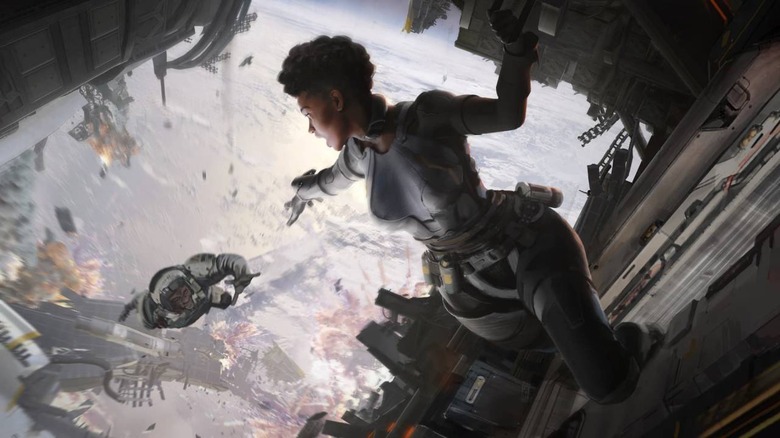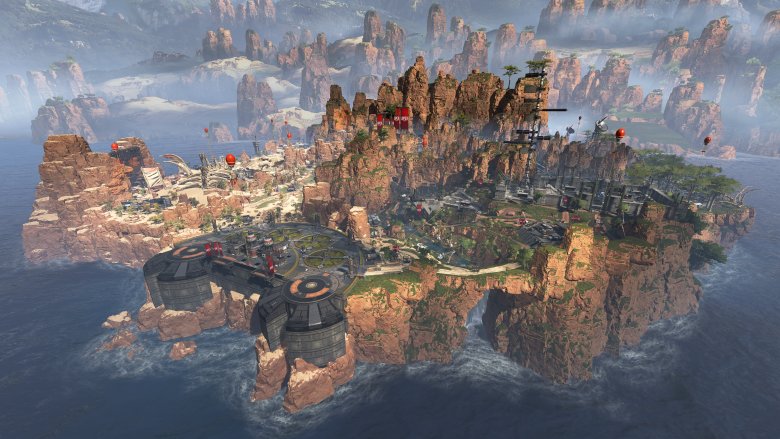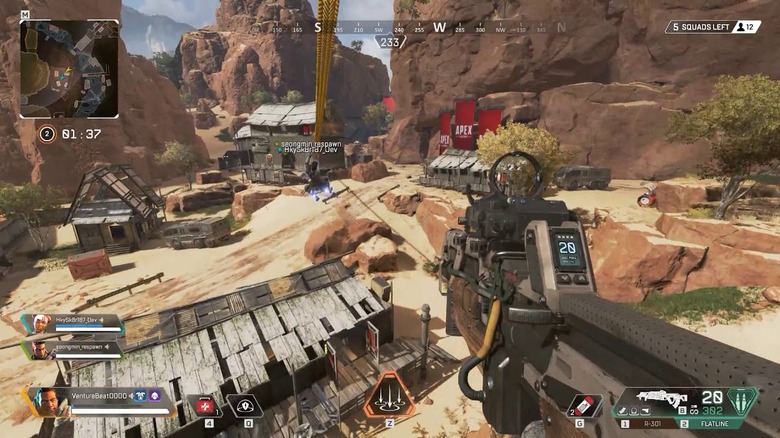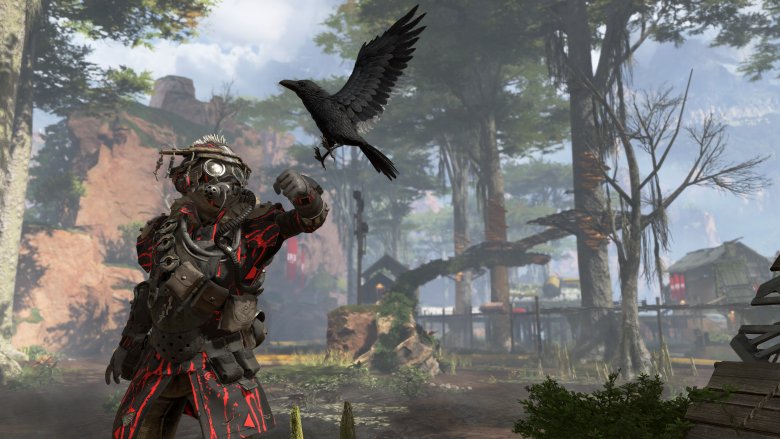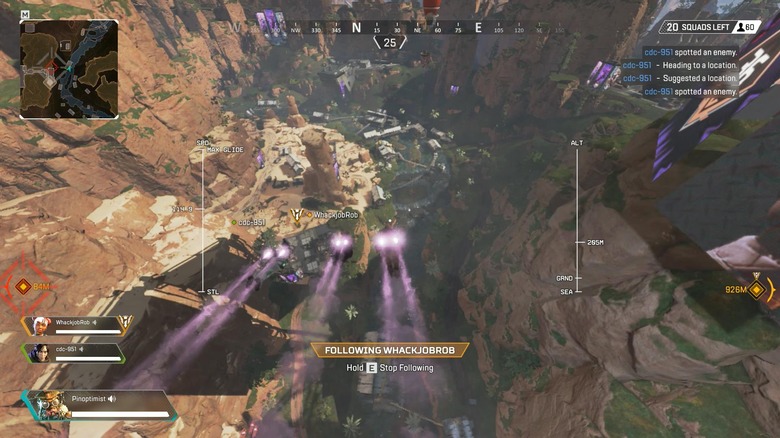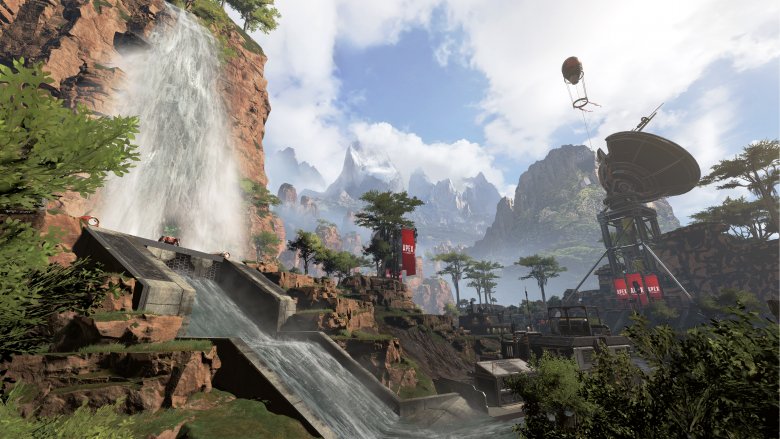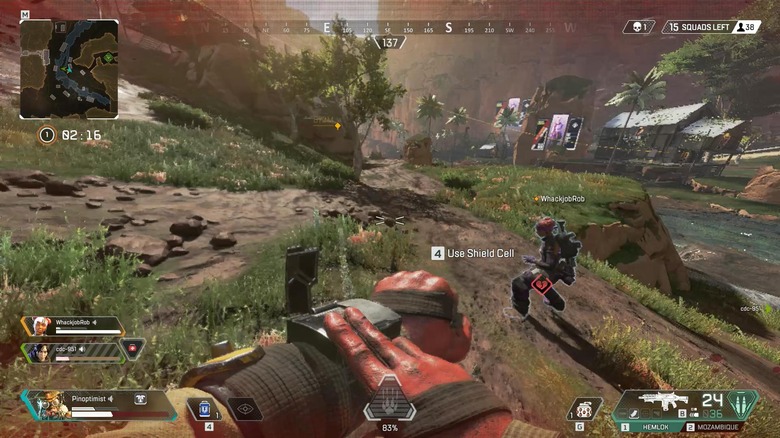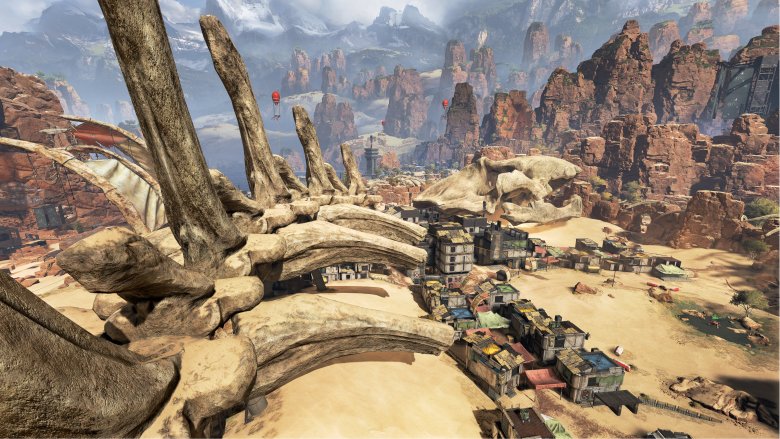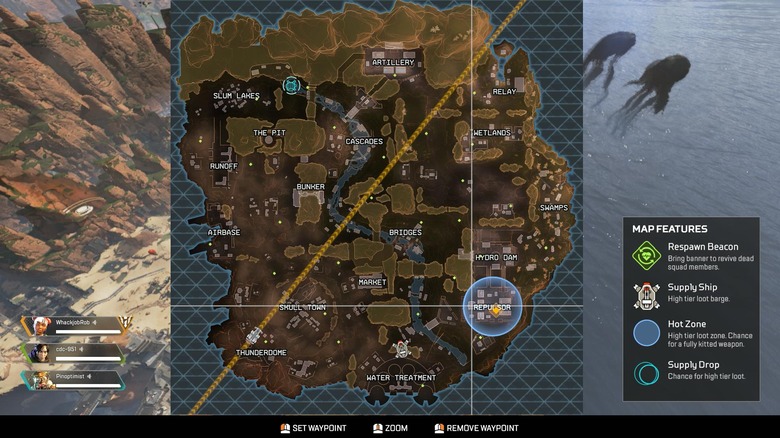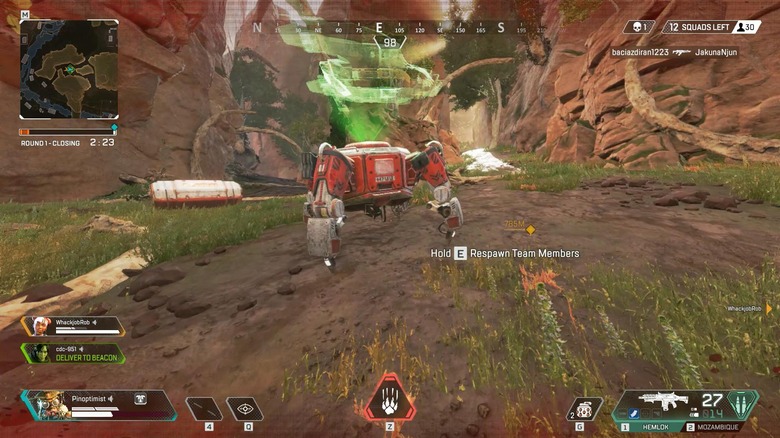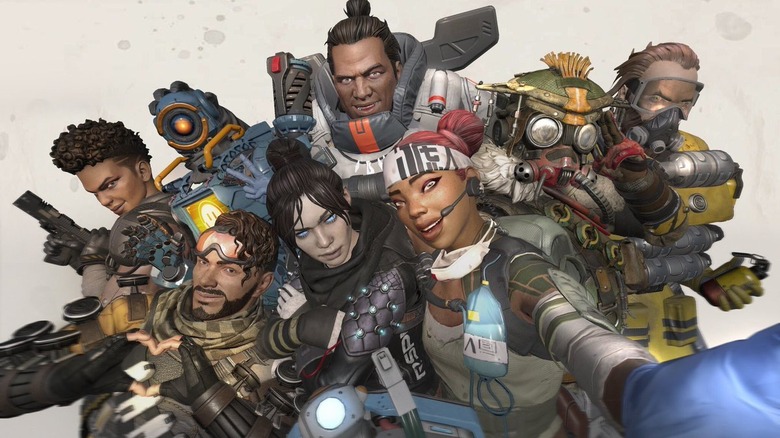What Apex Legends Does Better Than Fortnite
If you talk to anyone about battle royales, Fortnite will likely dominate the conversation. While various games in the genre come and go, none have created a wide-reaching community as popular as Fortnite. Epic's juggernaut finds its way into every corner of Twitch, and even the mainstream media picked up on flossing. Some notable battle royales have found some spotlight, like Call of Duty: Black Ops 4's Blackout game mode or genre originator PlayerUnknown's Battlegrounds, but nothing could hold a candle to the king.
Then Respawn Entertainment launched Apex Legends. As of February 7, the game garnered 10 million players, with a peak of one million playing concurrently. Sure that pales in comparison to Fortnite's 200 million players and counting, but note that Respawn reached those numbers in only three days. Being free-to-play definitely lowers the barrier to entry, but a majority of Apex Legends' success can be attributed to its game design. The game features some quality-of-life decisions that improve the overall battle royale experience. Let's take a look at what Respawn did better than Fortnite — and by extension, a majority of other battle royales out there.
Smaller map, bigger conflict
Apex Legends spawns players in a much smaller map than Fortnite, but to balance things out, only 60 play in one match. These 60 people split into 20 squads of three, and the last squad standing wins. At the time of writing, the game only features three-person squads, with no options for solo or duo matches. While there are less people when compared to other 100-man battle royales like Fortnite, you're more likely to run into conflict in Apex Legends because the map really is that small.
Called King's Canyon, many landmarks dot the landscape, and on the whole, the locales vary wildly. One minute, you're running through a desert, and the next you're in lush greenery cut by a waterfall. In essence, it doesn't take long to cover lots of ground. However, the same is true for the other 57 people that landed in the canyon, so expect to run into a group of enemies within the first few minutes of any match. Matches feel more action-packed and fast-paced because the next enemy is practically right around the corner.
Apex Legends never has a dull moment, but the same can't be said about Fortnite. The larger map can lead to prolonged stretches of sprinting to the new circle, depending on where you drop. Additionally, the player density can be hit or miss, and you might not even see another soul until the match is halfway over.
A quality ping system
When you first launch Apex Legends, you'll go through the tutorial, which teaches you the basics of movement and shooting. However, the game also goes through the trouble of explaining its robust ping system, which Respawn calls Smart Comms. By pointing at something and hitting the ping button, you'll leave a marker for your two other squadmates to see. These markers, however, change depending on the context. Point at a gun or item and your character will call it out, even mentioning finer details like the level of the armor. Point at an enemy and your character warns the squad.
Taking things a step further, you can use the ping button to respond to your teammates' callouts. If a teammate points out a location they want to explore, you can look at their marker and confirm it. When they call out an item, you can look at the marker and call dibs. Holding down the ping button even brings up a wheel with more detailed pings, like "someone was here."
This robust system was heavily tested by Respawn before Apex Legends went live. It makes the experience of playing with random people far better than in Fortnite, which doesn't make any strides beyond basic map markers. Voice chat is almost optional in Apex, while to properly coordinate in Fortnite, you'll definitely need a microphone.
Reactive character dialogue
To expand beyond Smart Comms, Respawn created characters that automatically call things out as a reaction to the situation. Your character has a host of voice lines, acting both as a warning to you as well as your two friends. For example, when the first circle appears, your character will comment on your distance from the ring. Perhaps even more impressively, your character will even discern how many of you are in the safe zone, saying something like, "Heads up! Only some of us are in the ring."
These voice lines brilliantly complement the battle royale genre, considering how chaotic they can be. Things can get overwhelming while you manage loot and engage in firefights, but your character will always remind you of the important things, like how soon the circle will start to close. This design decision inherently makes your teammates vital to your survival.
In contrast, Fortnite's characters are mute outside of the PvE mode. This means that for a squad to succeed, you'll again have to rely on voice communication to stay on top of things. If the players in your squad refuse to communicate, you practically lose up to 75% of your situational awareness, leaving your team vulnerable.
All hail the jumpmaster
Practically every battle royale game opens by making you choose where to land on the map, and Apex Legends is no different. However, Respawn massively improved the squad dropping experience by randomly deciding on a jumpmaster. This person controls everything about the jump, from when you launch to where you land. Smart Comms lets the squad suggest locations, but it ultimately comes down to one person's decision.
This mechanic keeps the squad together, creating a more cohesive unit. More importantly, it builds a sense of camaraderie, which is crucial in games with random players. Lone wolves can still opt out of the system, choosing to land wherever they want to, but Apex Legends clearly rewards squad-based gameplay.
Fortnite, much like other battle royale games, has people launch individually, even if they're in a squad. Without proper communication, all you can do is follow a marker and hope your teammates did the same. And let's be honest, we've all had that game of Fortnite where the squad separates the second everyone leaps off the Battle Bus. Apex Legends sets its squad-based tone in the first minute of the match, but the same can't be said about Fortnite. You'll mostly be relying on the goodness of others, hoping they stick together and have your back.
Slide into Apex Legends
Aside from all the communication and camaraderie that Apex Legends gets right, let's talk about the game's movement. Respawn's experience with the Titanfall series is on display here, and everything about how the game controls feels responsive. But the best aspect of the game's movement cannot go unnoticed: the sliding.
Hitting crouch while sprinting has your character maintain that momentum with a smaller hitbox. Where it really shines, however, is when you're moving downhill. Sliding on an incline increases your speed, and it feels almost like a rollercoaster. Not only is it fun to use, but it even acts as a great movement tool when you want to cover ground quickly. Luckily, the hilly map provides countless opportunities to exploit the sliding mechanic.
When compared to Apex Legends, the basic movement options in Fortnite leave a lot to be desired. On the whole, moving around lacks any sense of dynamism. You can run and jump, but there are no fun movement options that are inherent to your character. Anything beyond the basics requires an item, like the grappler or the launch pad. Apex Legends' basic movement is already dynamic, and it's further enhanced by some of the movement options specific characters have.
Ultimate abilities
Apex Legends takes a page out of the hero shooter notebook, featuring eight distinct characters. Unlike Fortnite, however, your choice goes beyond cosmetics. These eight characters, called Legends, complement vastly different playstyles, and each of them has three kinds of abilities: passive, tactical, and ultimate.
Finding the character best suited for you takes a bit of experimentation. Do you like being sneaky and aggressive? Give the Wraith a shot. Her tactical ability lets her phase out of harm's way for a short time, and her ultimate creates two portals on the map for anyone to use. If you like tanking, give Gibraltar a whirl. His passive protects his head when he aims down sights, and his tactical ability spawns a dome shield for him and his teammates.
While Fortnite's various items and traps fit a similar bill, it pales in comparison to the level of strategy that Apex Legends offers. In the Legend select screen, there's a level of strategy to choosing your character that affects the entire squad, whereas in Fortnite, your character choice is literally skin-deep. When you run into someone in Fortnite, your only option is to react to whatever items they use. On the other hand, upon seeing someone in Apex Legends, you can immediately tell what abilities they have on hand and plan for it.
No man-made constructs
Contrary to Fortnite, players in Apex Legends lack the ability to construct any walls or platforms. This allows people to focus on the skills that inherently makes them better players. Improved coordination, quick reaction times, perfect aim, and a mastery of movement all contribute to your survival in King's Canyon. You don't need to worry about gathering wood or brick to build walls and towers in the late game. All your focus can be set on finding better guns and armor, streamlining the entire process.
The lack of construction makes Apex Legends a much easier battle royale to pick up and learn, regardless of your experience with the genre. As long as you can grasp the basic mechanics of a first-person shooter, you'll be fine. While the construction mechanics of Fortnite are a novel addition, there comes a point where it feels gimmicky and gets in the way of just playing the game. Managing materials and building walls all get in the way of being the last person standing.
Test your might in boosted loot zones
Both Fortnite and Apex Legends feature certain locations with better loot than others. The mechanic is common across battle royales, creating another meta game for seasoned players to play with. Landing in high-quality loot areas leads to better weapons and armor, but you likely won't be the only person in the immediate vicinity. Landing in lower-quality zones means a higher chance of survival in the early game, but you may struggle in the mid- and late-game with poor loot drops. Fortnite occasionally has events that can change where you want to drop, like the Thanos Infinity Gauntlet event, but for the most part, you'll know where you want to go in every match.
Apex Legends shakes up the formula by introducing Hot Zones and Supply Ships. When choosing where to drop, both of these will randomly show up on the map for everyone to see. Hot Zones are small blue circles on the map with even better loot than usual, often housing the highest-tier armor and guns with good attachments on them. Keep in mind though, 19 other squads know the location, too. The Supply Ship plays a similar role, but it continues to move during the drop phase, making it trickier to reach. If you can land on it, though, prepare to have your mind blown with the loot you'll find. Also prepare to fight for your life a few seconds after landing.
Everyone gets second chances
In Fortnite, death means game over, and you'll have to queue up for a new match. In squads, your teammates can revive you, but they'll need to secure your location first. If your squad doesn't save you, you're unfortunately stuck spectating until the match ends, hoping your teammates can pull off a clutch victory without you.
Apex Legends likes to give players a little more hope than that. After going down, you can be revived, just like in Fortnite. If you completely die, however, you'll have one more chance at playing in the match. For 90 seconds, your banner remains active on the battlefield. Your teammates can pick up your banner until that timer runs out. Then they can bring it to a respawn station, essentially giving you another chance at life. You'll spawn with no items, but it's better than not playing at all.
These respawn stations add another form of risk-reward judgment in Apex Legends, as some squads might opt to stake out these stations to catch stragglers. Thus, going to a respawn station puts you at a massive disadvantage, but sometimes it's your only option to reunite your whole squad and have a chance at winning the game at large.
Champions and Kill Leaders
Before every match of Apex Legends begins, a screen shows you the Champion and their squad. This person ranked first in their previous match, and killing them nets you extra experience points after the match. They aren't marked on your map, so you'll have to find them like you would any other opponent. However, the in-game announcer will relay when the Champion has been killed, adding insult to injury.
Meanwhile, within every match, whoever has the most kills becomes the Kill Leader, and much like the Champion, they offer extra points when you kill them. Granted, this might prove to be more of a challenge. They're the Kill Leader for a reason, after all. These little additions to the core gameplay loop add an extra reward to each match, giving you a goal to work toward after you gear up.
Fortnite lacks any bonuses like this in your average game. The other 99 players who landed on the map are all the same to you. None of them are worth more points than the other. Apex Legends adds its own flavor to each match, creating another level of risk-versus-reward gameplay that makes hunting down enemies exciting again.

